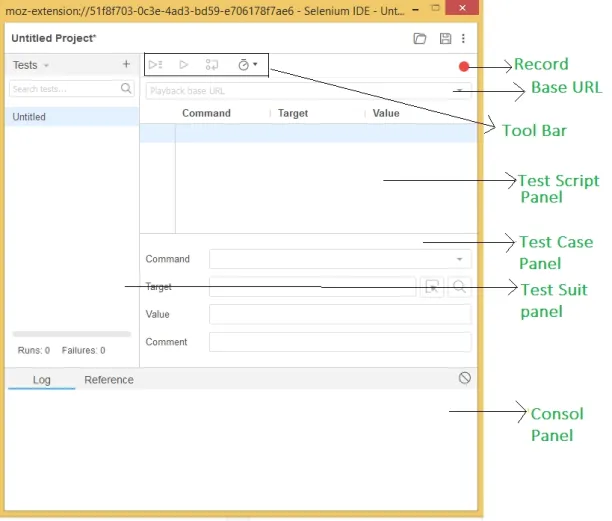Playwright and Selenium are both powerful frameworks for web test automation.
Playwright is a newer, open-source tool developed by Microsoft, designed to support modern web applications with speed and reliability. Selenium, a long-standing open-source project, supports a broad range of browsers, languages, and testing needs.
Explore the key differences between Playwright and Selenium, and when to choose each for automating the testing of web applications:
| Aspect | Playwright | Selenium |
|---|---|---|
| Initial release | 2020 | 2004 |
| Language support | JavaScript/TypeScript, Python, Java, .NET (C#) | Java, Python, C#, JavaScript (Node.js), Ruby |
| Browser support | Chromium (Chrome/Edge), Firefox (Gecko), WebKit (Safari) | All modern browsers (Chrome, Firefox, Safari, Edge), and Internet Explorer |
| OS/Platform support | Windows, macOS, Linux (cross-platform) | Windows, macOS, Linux |
| Execution speed | Generally faster (less overhead, auto-waits reduce delays) | Typically slower (WebDriver adds communication overhead) |
| Mobile automation | Emulates mobile devices in browser (no native mobile app support) | Real mobile devices via Appium or cloud grids (for native app and mobile browser testing) |
Playwright vs Selenium: Which tool should you choose?
1. Performance
Playwright uses browser devtools protocols to communicate with browsers at a lower level. This reduces latency. Selenium’s reliance on the WebDriver API makes it slower, especially for large test suites.
Playwright has auto-wait mechanisms that wait for elements to be ready before interacting, whereas Selenium requires the user to insert waits (implicit or explicit) for elements manually.
A 2025 study that ran browsers continuously for 24 hours found that Selenium achieved 100% uptime with no failures, while Playwright achieved 99.72% uptime. 1
2. Language support
One of Selenium’s most significant advantages is its support for multiple programming languages. Official Selenium language bindings include Java, Python, C#, JavaScript (Node.js), Ruby, PHP, Perl, and Kotlin.
Playwright’s list is slightly shorter compared to Selenium; officially, JavaScript/TypeScript, Python, Java, and .NET (C#) are supported. There is no official support for Ruby or PHP in Playwright. Organizations that rely on less common languages for testing might find Playwright suitable for their needs.
3. Ease of setup
- Initial setup: Playwright comes as a single package (for each language binding) that bundles the necessary browser drivers. Selenium requires users to install browser driver executables (like ChromeDriver for Chrome). However, recent versions of Selenium (Selenium 4 and later) introduce a Selenium Manager that automatically downloads the appropriate driver for your browser.
- Learning curve: Playwright automatically handles waiting for elements to be actionable with simple commands. The documentation covers advanced topics, such as Shadow DOM and iframes. Additionally, Playwright offers tools such as code generators and inspectors. Selenium WebDriver API is helpful, but it is more low-level. For instance, you may need to wait until specific conditions are met. Since the ecosystem is larger, the learning curve for Selenium is steeper.
- Built-in tools: Playwright Test Runner (for Node.js) provides a ready-made framework for structuring tests and parallel test execution. Selenium, conversely, does not include a test runner. There is an additional setup step and learning the third-party framework for test structure and assertions.
3. Suitable scenarios
End-to-end testing:
Both testing tools can write automated end-to-end tests for modern web applications. Playwright, being newer, was built with a modern framework, such as single-page applications. It can easily simulate various browser contexts or mobile viewports.
Selenium can also test modern web apps. However, it can sometimes require more effort or additional libraries. If your application needs to be tested on a wide range of browsers, Selenium is a suitable choice.
Web scraping:
Playwright offers more fine-grained control for scraping complex web sources. For instance, you can automate clicking through Single-Page Applications (SPAs) that rely on AJAX.
Selenium is also used for data collection projects. It offers many tutorials and guides on how to use Selenium for scraping. You can also run Selenium in headless mode. For example, you could use Selenium Grid to run scrapers in parallel across many machines.
CI/CD integration:
Both Playwright and Selenium support headless execution, which means they can run on servers without a graphical user interface (GUI). Playwright’s test runner defaults to parallelizing across CPU cores.
If you need to test across multiple browsers, Selenium might require setting up multiple nodes or jobs for each browser. Playwright can sequentially run the same test on Chromium, Firefox, and WebKit with one command.
4. Community
Selenium’s community is one of the largest among the test automation tools. The ecosystem encompasses tools such as Selenium Grid (for parallel execution) and Selenium IDE (for record-and-playback), as well as numerous third-party libraries.
For example, Capybara uses Selenium under the hood for Ruby, and many BDD tools have Selenium integrations.
Playwright’s community is smaller than Selenium. Selenium has far more existing integrations, but Playwright’s ecosystem is expanding. For example, testing cloud providers have started adding support for Playwright.
Selenium’s development is community-driven by a core team and many volunteers (the latest version as of May 2025 was 4.33.0). Playwright is maintained by Microsoft engineers and open-source contributors.
5. Platform and browser support
- Cross-browser compatibility: Selenium can automate all major browsers, including Google Chrome, Mozilla Firefox, Apple Safari, and Microsoft Edge. You can also automate older browsers, such as Internet Explorer or Opera, using WebDrivers. Playwright focuses on modern browser engines, Chromium (which covers Chrome, new Edge, Brave), Firefox (Gecko engine), and WebKit (the engine behind Safari).
- Cross-platform: Both automated testing tools are compatible with multiple platforms, including Windows, macOS, and Linux.
- Native mobile emulation: Selenium supports mobile app automation (using Appium) and mobile browsers. Playwright does not automate native mobile apps.
Advantages and disadvantages of each automation tool
Playwright – Advantages:
- Modern features: Supports modern web features like intercepting network requests and handling web sockets.
- Easy setup: No need to manage browser drivers separately.
- Built-in support for test runner: Includes a full-featured test runner, parallelization, and reporting.
- Operating systems support: One Playwright script can target Chromium, Firefox, and WebKit with the same code.
Playwright – Disadvantages:
- Smaller ecosystem: Playwright has a smaller community and fewer pre-existing plugins compared to Selenium.
- Fewer language bindings: Supports fewer languages (no official support for Ruby, PHP, etc.).
- Testing on apps: For true mobile testing, Playwright would not be suitable since it cannot directly automate native mobile apps or real mobile browser instances.
Selenium – Advantages:
- Extensive community: Years of usage have produced a vast amount of community support.
- Multi-language support: Supports a wide range of programming languages, allowing users to write test scripts in their preferred language.
- Selenium Grid for scalability: Comes with a built-in solution to distribute tests across multiple machines and run them in parallel.
- Broad browser coverage: Automate virtually any browser, modern or legacy.
Selenium – Disadvantages:
- Slower execution: Selenium scripts may run slower due to the additional communication layer required with WebDriver compared to Playwright.
- Higher setup effort: Managing browser drivers (though Selenium Manager helps) and configuring test frameworks.
- No built-in advanced features: There’s no built-in network interception or request blocking, no automatic screenshot comparisons, and no first-party test runner or reporter.
What is Playwright?
Playwright is an open-source framework for automating web browsers. It is open-sourced by Microsoft (initially released in 2020) and primarily used for cross-browser end-to-end testing of web applications.
Key features:
- Playwright can automate all modern browsers using a single API, enabling cross-browser testing. Users can run tests in either headless mode (without a graphical user interface) or in GUI mode.
- The Playwright API is available in multiple programming languages, including JavaScript/TypeScript, Python, Java, and C#/.NET.
- Each test can run in a separate browser context and doesn’t share state (cookies or cache) with other tests.
- It also includes mobile device emulation. You can simulate browsers on devices like iPhones and Androids.
What is Selenium?
Selenium is an open-source framework for automating web browsers. Instead of manual testing, developers and QA engineers use Selenium to automate web browser actions (clicking links, filling forms, navigating pages, etc.). The Selenium project includes Selenium WebDriver, Selenium Grid, and Selenium IDE.
Selenium is freely available under the Apache 2.0 license, offering a rich ecosystem of extensions and libraries.
Key features:
- It supports multiple programming languages for writing test scripts. Official language bindings include Java, Python, JavaScript (Node.js), C#, Ruby, and other languages such as PHP or Perl.
- It works with all modern browsers, as well as legacy Internet Explorer.
- Selenium WebDriver (Core API) allows programmatic control of web browsers, enabling navigation to pages, finding HTML elements, clicking buttons, and entering text.
- Selenium IDE (Record & Playback)-Selenium IDE is a browser extension (available for Firefox and Chrome). It enables you to create test scripts without programming, as you click and type in the browser, Selenium IDE records those steps.

Conclusion
The Playwright is ideal when ease of use and testing modern web features are top priorities. If your project requires broad browser coverage or needs to integrate with a specific programming language, Selenium is a go-to choice. You can use both. Both tools are open-source and improving continuously.

Comments
Your email address will not be published. All fields are required.